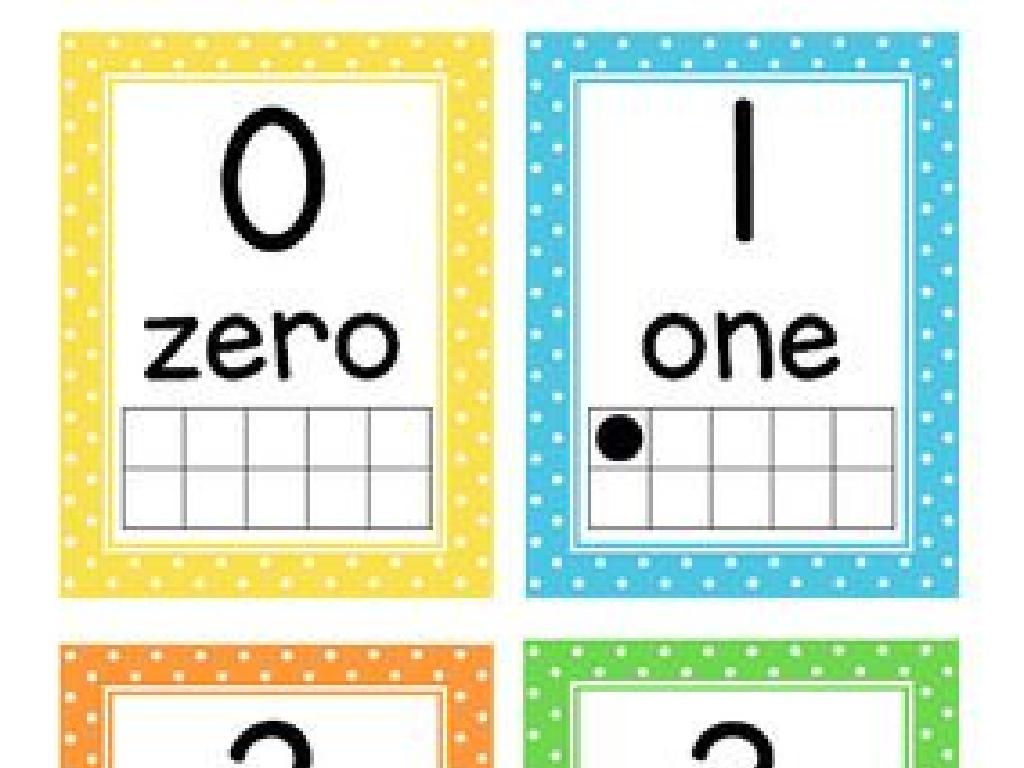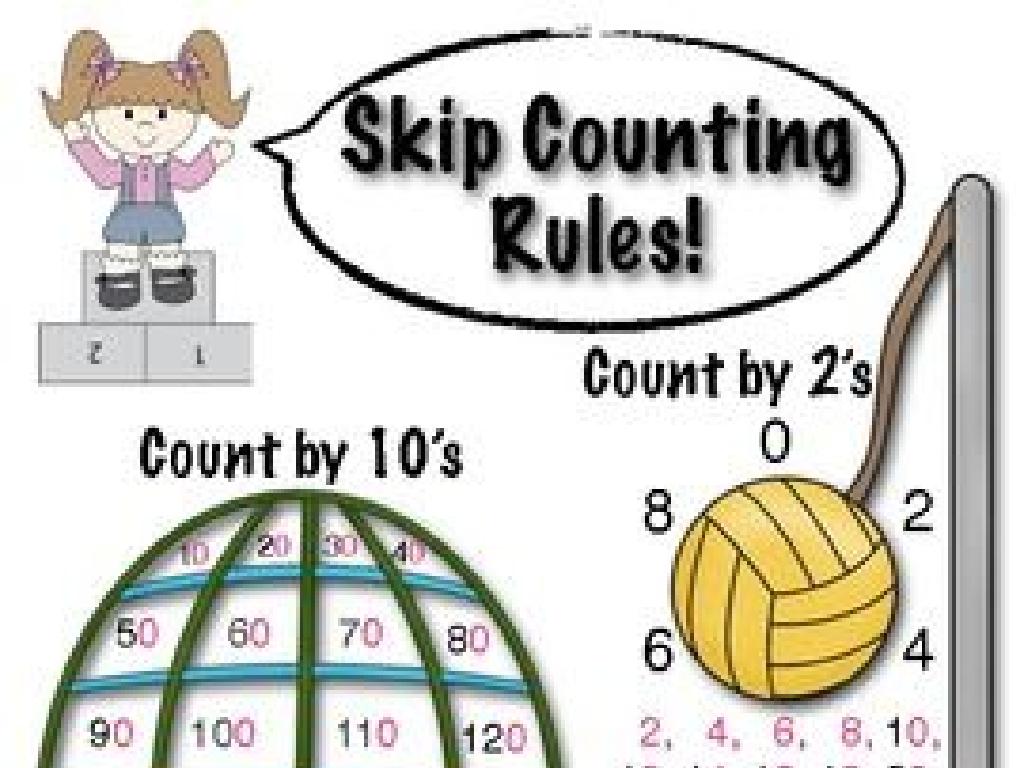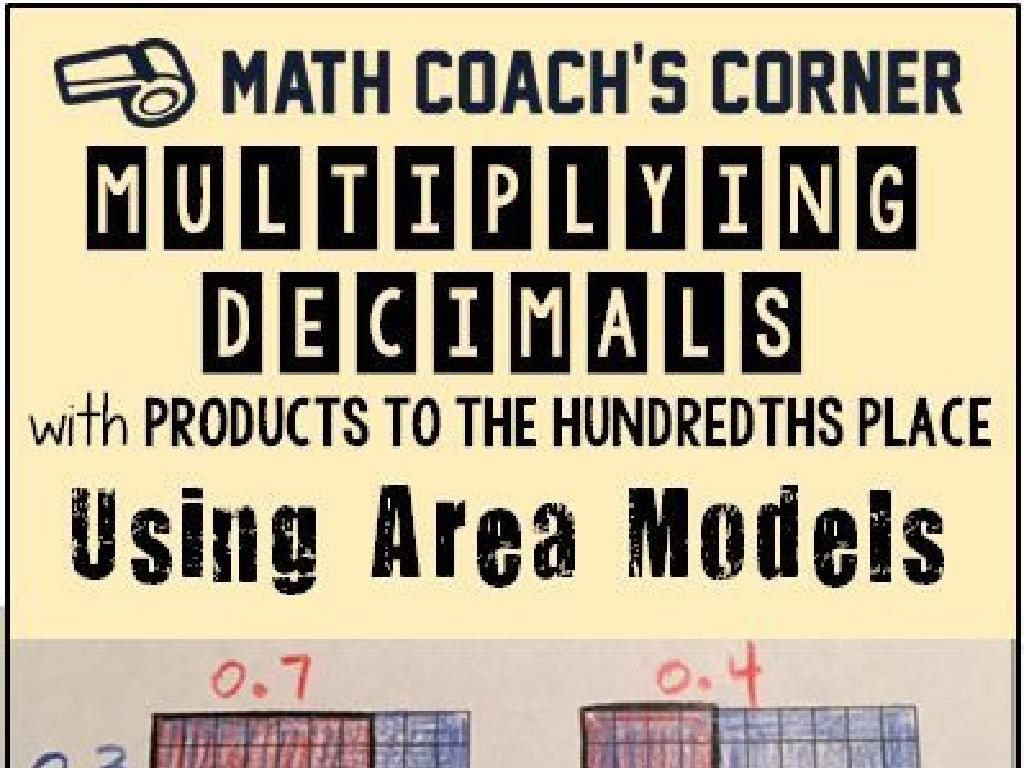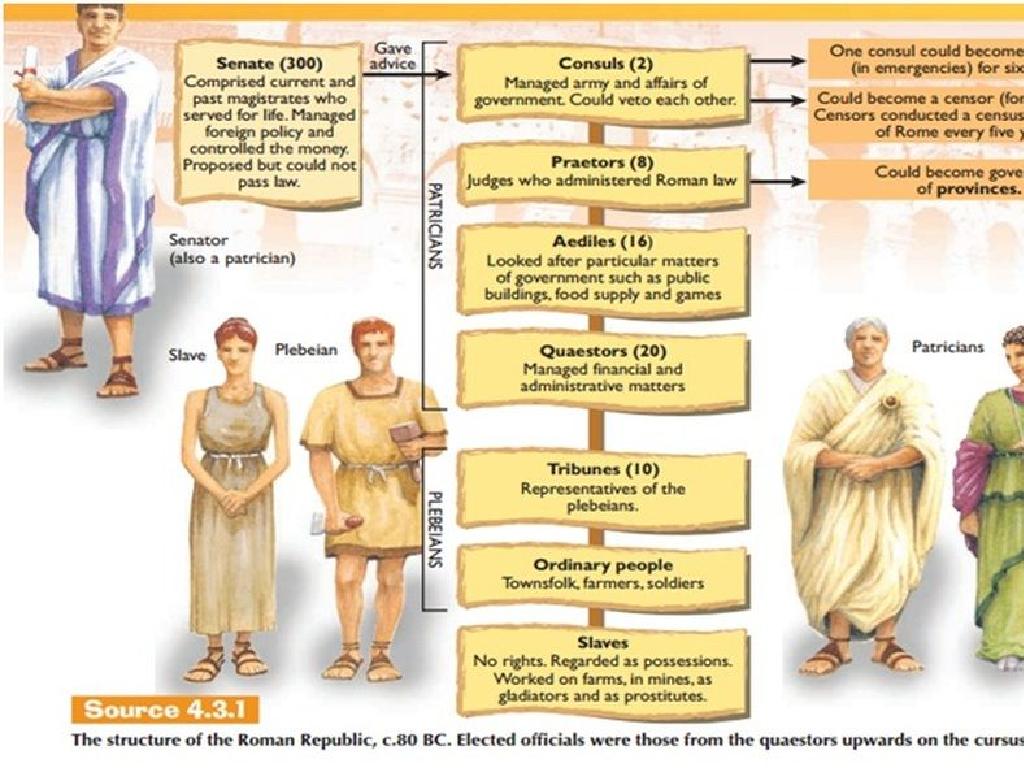Draw Quadrilaterals
Subject: Math
Grade: Third grade
Topic: Quadrilaterals
Please LOG IN to download the presentation. Access is available to registered users only.
View More Content
Welcome to Quadrilaterals!
– What are Quadrilaterals?
– A shape with four sides and four corners.
– Counting sides of quadrilaterals
– Let’s count together: 1, 2, 3, 4 sides!
– Exploring types of quadrilaterals
– Like squares, rectangles, and trapezoids.
– Drawing different quadrilaterals
– We’ll use rulers to draw them neatly.
|
This slide introduces the concept of quadrilaterals to third-grade students. Begin by explaining that quadrilaterals are part of a shape family with four sides and four corners. Engage the class by asking them to count the sides of various quadrilaterals. Introduce different types of quadrilaterals such as squares, rectangles, rhombuses, and trapezoids, and highlight their unique properties. Provide a hands-on activity where students can practice drawing these shapes using rulers and other geometry tools. Encourage them to identify quadrilaterals in the classroom or at home to connect the lesson to real-life objects.
Exploring Quadrilaterals
– A quadrilateral has four sides
– Sides can be different lengths
– Angles can vary in size
– Examples: squares, rectangles
– Trapezoids are also quadrilaterals
|
Introduce the concept of quadrilaterals by explaining that they are two-dimensional shapes with four sides. Emphasize that these sides can be of any length and the angles between them can be of any size, which allows for a variety of shapes within the quadrilateral family. Provide examples such as squares, where all sides and angles are equal, rectangles, which have equal opposite sides and angles, and trapezoids, which have only one pair of parallel sides. Encourage students to think of other examples of quadrilaterals they see in everyday life and be prepared to draw different types of quadrilaterals in class.
Exploring Quadrilateral Properties
– Quadrilaterals: four sides & angles
– Sum of angles equals 360°
– Some have equal sides or angles
– Like squares have all sides equal
– Let’s discover these quadrilaterals!
– We’ll look at squares, rectangles, and more!
|
This slide introduces students to the basic properties of quadrilaterals. Start by explaining that all quadrilaterals have four sides and four angles. Highlight that no matter what quadrilateral they are dealing with, the sum of its angles will always add up to 360 degrees. Then, discuss that some quadrilaterals have special properties, such as sides of equal length or angles that are the same, using squares and rectangles as examples. Encourage students to think of other quadrilaterals they know and discuss their properties. This will set the stage for identifying and drawing different quadrilaterals in subsequent lessons.
Types of Quadrilaterals
– Quadrilaterals have four sides
– Squares, rectangles, and rhombuses
– Squares have equal sides, rectangles have equal opposite sides, rhombuses have all sides equal but tilted
– Each type has unique features
– Squares have 4 right angles, rectangles have 4 right angles, rhombuses have opposite equal angles
– We’ll learn to draw them all
|
This slide introduces students to the concept of quadrilaterals and their types. Emphasize that all quadrilaterals have four sides, but they can look very different from each other. Explain that a square has four equal sides and four right angles, making it a special type of rectangle. A rectangle has opposite sides that are equal and four right angles. A rhombus has four sides that are all equal in length but, unlike a square, does not have to have right angles. Encourage students to observe these shapes in their environment and bring examples to class. In the next lessons, we will practice drawing each type of quadrilateral and discuss their properties in more detail.
Drawing a Square
– A square has four equal sides
– It’s like a box with all the same sides
– Every angle is a right angle
– Where two lines meet, it makes a square corner
– Use a ruler for equal sides
– A ruler helps us make the sides match perfectly
– Let’s practice drawing together!
|
This slide introduces the concept of drawing a square to third-grade students. Emphasize that a square is a special type of quadrilateral with all sides of equal length and each angle exactly 90 degrees. Demonstrate how to use a ruler to draw straight, equal sides. For the class activity, provide each student with paper and a ruler. Guide them through the process of drawing their own square, starting with a single line and then adding the remaining three sides, checking for equal length and right angles. Encourage students to measure and compare their sides for accuracy. Offer assistance as needed and praise their efforts to boost confidence.
Drawing a Rectangle
– A rectangle has four sides
– Two sides are longer, two are shorter
– Opposite sides are equal
– Make sure the sides facing each other are the same length
– It has four right angles
– Each angle is 90 degrees, forming an ‘L’ shape
– Use rulers for drawing
– Straight edges help us draw accurate rectangles
|
When teaching third graders to draw a rectangle, start by explaining that a rectangle is a type of quadrilateral with four sides. Emphasize that opposite sides are of equal length and that all four corners are right angles, which means they are 90 degrees. Demonstrate how to use a ruler to draw straight lines and ensure accuracy. Have students practice drawing rectangles with different lengths of sides, but maintaining the right angles and equal opposite sides. This activity will help them understand the properties of rectangles and improve their geometric drawing skills.
Drawing a Rhombus
– A rhombus has equal sides
– Angles are not right angles
– Imagine a leaning square
– It’s like a square that’s been pushed over
– Let’s draw with rulers!
– Use a ruler for straight, equal sides
|
In this slide, we’re focusing on how to draw a rhombus, which is a type of quadrilateral. Start by explaining that all sides of a rhombus are equal in length, similar to a square. However, unlike a square, the angles in a rhombus are not 90 degrees. To help students visualize, compare a rhombus to a square that’s been pushed over. This will help them understand the shape before they begin drawing. During the activity, guide the students to use their rulers to draw straight lines and check that each side is the same length. Encourage them to measure the sides to ensure accuracy. This hands-on activity will reinforce their understanding of the properties of a rhombus and help them recognize it in different orientations.
Drawing a Trapezoid
– A trapezoid has one parallel side pair
– Other sides may have different lengths
– Start with the parallel sides
– Draw two horizontal lines parallel to each other
– Connect them with the other sides
– Then draw two more sides to complete the shape
|
When teaching third graders to draw a trapezoid, start by explaining what parallel lines are and how a trapezoid only requires one pair of parallel sides. Emphasize that the lengths of the non-parallel sides are not fixed and can vary. Demonstrate on the board by drawing two parallel lines first, ensuring they are horizontal for simplicity. Then, connect these lines with two more lines at the ends to form a trapezoid. Encourage students to practice by drawing their own trapezoids, experimenting with different lengths for the non-parallel sides. Provide guidance and ensure they understand that the two sides that are not parallel can be of any length and can slant in any direction, as long as they connect the parallel sides.
Class Activity: Quadrilateral Art!
– Create your own quadrilateral art
– Draw different quadrilaterals using a ruler
– Remember, quadrilaterals have 4 straight sides
– Cut out your quadrilaterals
– Be careful using scissors to cut them out
– Arrange them into a picture or pattern
– Make a creative design with your shapes
|
This activity is designed to help students apply their knowledge of quadrilaterals in a fun and creative way. Provide students with paper, rulers, and scissors. Remind them of the properties of quadrilaterals as they draw. They should draw a variety of quadrilaterals such as squares, rectangles, trapezoids, and parallelograms. After drawing, they will cut out the shapes and use them to create a unique piece of art. This could be a picture, like a house or a robot, or an abstract pattern. Encourage creativity and ensure safety while handling scissors. Possible variations of the activity could include using colored paper, collaborating with a partner, or incorporating other geometric shapes. This hands-on activity not only reinforces geometric concepts but also allows for artistic expression.
Quadrilateral Review & Questions
– Reviewing quadrilateral shapes
– Naming all the quadrilaterals
Can you recall the names like square, rectangle?
– Asking questions about drawing
It’s okay to ask for help if you’re unsure!
– Ensuring understanding for all
|
This slide is meant to recap what we’ve learned about quadrilaterals. Start by asking the class to name the different types of quadrilaterals to reinforce their memory. Encourage participation by asking if they remember how to draw each shape. It’s important to create an open environment where students feel comfortable asking questions. Offer additional support to those who need it and consider demonstrating drawing techniques again if necessary. You can also use this time to assess the students’ understanding and plan for any additional review or practice that may be needed.






